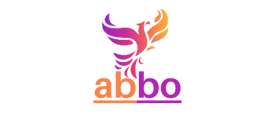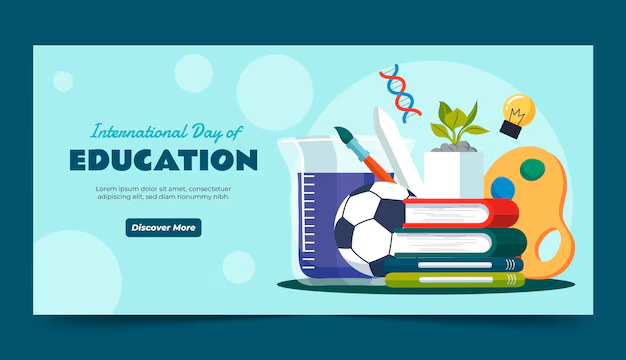In the fast-paced, ever-evolving landscape of today’s world, traditional education models are increasingly being challenged by the rapid growth of technology, global interconnectedness, and the ever-expanding breadth of knowledge. In this context, the concept of “Education Beyond Boundaries” has emerged, emphasizing the importance of fostering creativity, critical thinking, and a lifelong commitment to learning. The traditional classroom walls are no longer the only place where education happens; instead, education is evolving into an all-encompassing, borderless journey.
The Changing Landscape of Education
The world is changing at an unprecedented rate, influenced by advancements in technology, globalization, and new approaches to how we learn and engage with information. Education no longer simply focuses on the transfer of knowledge from teacher to student. It now prioritizes equipping individuals with the tools, skills, and mindset to thrive in an ever-changing environment. Today’s educational system must go beyond traditional boundaries to embrace innovation, foster critical thinking, and encourage creativity.
One of the most profound shifts in education is the movement away from rote memorization and standardized testing. Instead, schools and educational institutions are increasingly focused on teaching students to think critically, solve problems creatively, and adapt to new and unforeseen challenges. The essence of this shift is rooted in the idea that education should not only impart knowledge but also teach individuals how to think, how to ask questions, and how to engage meaningfully with the world around them.
Fostering Creativity in Education
Creativity is a vital skill in the modern world, driving innovation, problem-solving, and progress. It is essential for individuals to be able to approach challenges with new perspectives and solutions. Traditional education systems often prioritize linear thinking and strict curricula, but creativity thrives in an environment that encourages exploration, experimentation, and risk-taking.
Fostering creativity in education involves integrating activities that stimulate the imagination, such as arts, music, and hands-on projects. Creative thinking exercises, interdisciplinary collaboration, and open-ended assignments help students develop their creative problem-solving abilities. Educators must also create a supportive atmosphere where students feel free to express unconventional ideas and make mistakes without the fear of failure. By nurturing creativity, education empowers individuals to think outside the box and bring fresh ideas to the table.
Critical Thinking: The Core of Education Beyond Boundaries
Critical thinking is one of the most crucial skills in the digital age. With information constantly bombarding us from all directions, the ability to sift through data, evaluate its credibility, and draw informed conclusions is more important than ever. Critical thinking empowers individuals to approach complex problems, consider multiple perspectives, and make decisions based on evidence and logic, rather than simply accepting things at face value.
Critical thinking can be fostered in a variety of ways within the educational framework. Encouraging students to question assumptions, challenge conventional wisdom, and engage in debates or discussions on diverse topics can strengthen their ability to think critically. Case studies, problem-based learning, and collaborative group work also help students apply critical thinking skills in real-world scenarios.
Lifelong Learning: A Continuous Journey
The notion of lifelong learning has become a cornerstone of modern education. With the rapid pace of technological and societal changes, skills that are relevant today may quickly become obsolete. In such an environment, the ability to learn new skills, adapt to changing conditions, and stay curious is vital for personal and professional growth.
Lifelong learning involves adopting a mindset that views learning as an ongoing, ever-evolving process. Educational systems should instill in students a passion for learning and the tools to continue their education long after formal schooling ends. This can include encouraging self-directed learning, offering access to online resources and courses, and providing opportunities for skill development throughout one’s life. Additionally, cultivating a growth mindset—the belief that abilities and intelligence can be developed through effort and learning—can motivate individuals to pursue continuous growth.
The Role of Technology in Education Beyond Boundaries
Technology plays a critical role in education beyond boundaries. The internet, online platforms, and digital tools allow for a personalized, flexible, and global approach to learning. Online courses, virtual classrooms, and collaborative tools break down geographical barriers, giving students access to resources and experts from around the world. Technology also supports innovation in how knowledge is delivered, such as through immersive learning experiences using virtual reality (VR) or gamified education.
However, it’s important to recognize that technology alone cannot replace the human aspect of education. The guidance of educators, mentorship, and the ability to foster emotional intelligence and social skills are still integral to effective learning. When technology is integrated effectively with human-centered teaching methods, it opens up endless possibilities for creative, critical, and lifelong learning.
Frequently Asked Questions (FAQs)
- What does “Education Beyond Boundaries” mean?
- Education Beyond Boundaries refers to the idea of learning that goes beyond traditional classroom settings and structures. It focuses on fostering creativity, critical thinking, and lifelong learning while embracing the opportunities provided by technology and global interconnectedness.
- Why is creativity important in education?
- Creativity is important because it fosters innovation, problem-solving, and adaptability. In today’s rapidly changing world, creative individuals are better equipped to think outside the box and generate new solutions to complex challenges.
- How can critical thinking be integrated into the curriculum?
- Critical thinking can be integrated through problem-based learning, debates, case studies, and encouraging students to question assumptions and analyze information from multiple perspectives.
- What role does technology play in modern education?
- Technology helps break down geographical and logistical barriers to education, provides access to a wealth of resources, and supports personalized learning. It also allows for innovative teaching methods such as gamification and virtual reality.
- What is lifelong learning and why is it important?
- Lifelong learning is the ongoing, voluntary, and self-motivated pursuit of knowledge for personal or professional development. It is important because it allows individuals to adapt to changing circumstances and stay relevant in a dynamic world.
- How can educators foster a growth mindset in students?
- Educators can foster a growth mindset by encouraging effort, resilience, and perseverance, as well as framing failures as learning opportunities. Praising the process of learning rather than just the outcomes can also help.
- What are the key benefits of education beyond boundaries?
- The key benefits include promoting creativity, enhancing critical thinking skills, encouraging adaptability, and fostering a lifelong love of learning. It also prepares students to thrive in an interconnected, technology-driven world.
Conclusion
Education beyond boundaries is an essential paradigm for the modern world. It shifts the focus from mere knowledge transfer to the cultivation of skills that enable individuals to thrive in an ever-changing environment. By fostering creativity, critical thinking, and lifelong learning, we can prepare future generations to navigate the complexities of the world and contribute meaningfully to society. In embracing this transformative approach, we are not just preparing students for the future; we are shaping a world where innovation, collaboration, and curiosity lead the way.
Key Takeaways:
- Education must go beyond traditional boundaries to foster creativity, critical thinking, and adaptability.
- Lifelong learning is essential in a world that’s constantly changing.
- Technology can enhance education but must be integrated with human-centered teaching methods.
- A growth mindset and creative problem-solving skills are key to success in the modern world.

